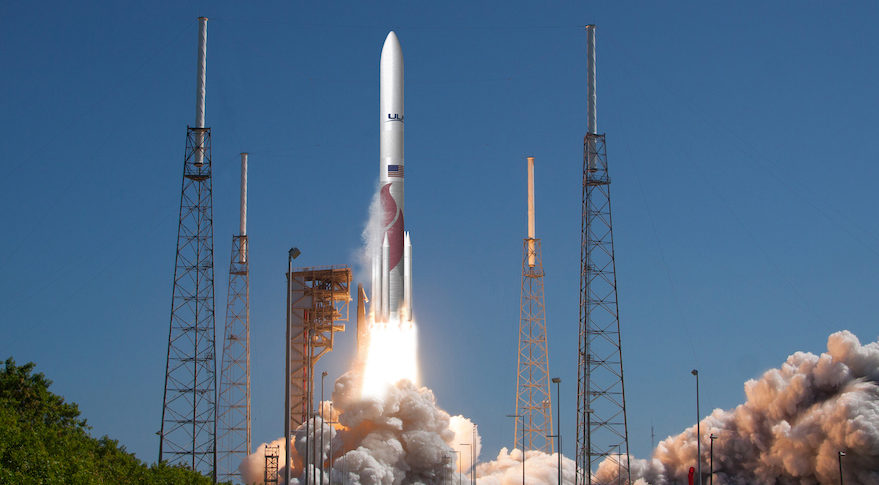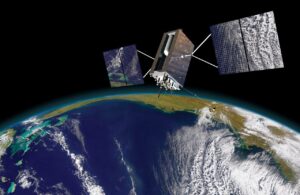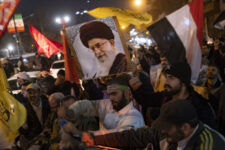
ULA Vulcan Centaur rocket illustration
WASHINGTON: HASC Chair Adam Smith is pushing the Space Force to ensure that at least three providers, instead of the current two, can launch future missions under the billion-dollar National Security Space Launch Program (NSSL).
In his mark-up of the 2021 National Defense Authorization Act (NDAA), obtained by Breaking Defense, Smith adds $150 million to the Space Force’s RTD&E request of $561 million for the next stage of NSSL, called Phase 3. It directs the service “to conduct a full and open competition and enter into three agreements to fund certification and infrastructure requirements and transformational technologies.”
Full committee debate on the NDAA begins on July 1. Although the House and Senate authorizers do not have the final say on spending, their legislation lays out a blueprint for appropriators as they take up the annual spending bills.
The HASC draft echoes similar language in the SASC version of the NDAA, although the Senate pumps up funds for beginning Phase 3 R&D to $250 million. It also follows a RAND study, released in May, that cautioned that the services’ current strategy of continuing to fund only two firms to do early work on Phase 3 might end up leaving DoD with too few companies able to launch national security payloads.
Smith’s language further “would prohibit changes to the phase 2 acquisition strategy” — that’s the current phase — in “mission performance requirements, acquisition schedule, and the selection of two launch providers.”
It would also “mandate that the period for ordering phase 2 launch missions end by September 2024, cap the Launch Services Agreement funding amount for providers selected for phase 2, and require a termination date for Launch Services Agreements with providers not selected for phase 2.” The mark would fully fund the service’s procurement request for Phase 2 of $1.04 billion.
Within weeks, the Space Force will choose two out of four contestants — Northrop Grumman, United Launch Alliance (ULA), SpaceX, and Blue Origin — for the phase 2 NSSL contracts (under a 60/40 split) that will lock up all national security launches (with 34 currently planned) from 2022 through 2026, representing billions of dollars.
Blue Origin, the commercial launch firm founded by Amazon magnate Jeff Bezos, has been pressing hard for the current two-provider program to be expanded. Neither the HASC or SASC language would allow the current phase 2 program to be reopened, however.
The other key question has been what happens after that contract, as the competition reopens. Up to now, the Air Force has said that it will no longer provide research funds to the losers of phase 2 to assist them to prepare for the future phase 3 competition. Both the HASC and SASC disagree, and want that funding to continue to help ensure potential providers are prepared to meet future military launch requirements.
Commercial space companies will also be delighted by the mark’s inclusion of $25 million to fund “commercial polar space-based proliferated LEO broadband services and demonstrations,” The provision for “Commercial SATCOM” represents new money, that Space Force did not ask for — but that commercial providers of satellite communications have been pushing for years.
Space Force head Gen. Jay Raymond in February signed the Vision for Enterprise Satellite Communications (SATCOM), designed to create a seamless network of military and commercial comsats in all orbits, accessible to troops, vehicles, ships and aircraft via ground terminals and mobile receivers that would automatically “hop” from one satellite network to another. However, there has been little funding for pursuing commercial capabilities.
The mark also adds $20 million more under that line an increase in acquisition of “commercial space domain awareness services and data.”
While the HASC version of the NDAA mostly gives the Space Force what it asked for, it does call out the GPS III Follow-On program for “unjustified cost growth” in the space segment and cuts $15 million from the service’s $627.8 million procurement request; along with another $10 million from the R&D request of $263.5 million. Prime contractor Lockheed Martin is building 10 GPS III satellites, and 22 GPS III Follow-On satellites that will sport improved encryption among other upgrades. The Space Force is planning to launch the third GPS III satellite on June 30.

GPS III satellite, Lockheed Martin image
The draft also would cut $5 million from the long-troubled GPS III Operational Control Segment (OCX), being developed by Raytheon — again citing unjustified cost growth.
Next Generation Overhead Persistent Infrared (Next-Gen OPIR) also takes a smack for “unjustified cost growth” in its Block 0 satellites to be placed in Geosynchronous Orbit (GEO, some 36,000 kilometers above sea level.) The HASC chair’s mark would snip $20 million from the Space Force total request of $2.32 billion for Next-Gen OPIR.
Intriguingly, the mark also cuts $8 million from the service’s $65.5 million request for procurement of unspecified, and no doubt classified, “Counterspace Systems, saying it provided Congress “insufficient justification” for the request.
In other policy actions, the HASC chair mandates that the National Geospatial-Intelligence Agency (NGA)
“assist the Joint Chiefs of Staff, combatant commands, and the military departments in establishing coordinating, consolidating, and validating mapping, charting, geodetic data, and safety of navigation capability requirements through a formal process governed by the Joint Staff.” The NGA, as Breaking D readers know, provides geospatial intelligence gathered by the Intelligence Community and commercial space operators to military Combatant Commanders.
It also calls upon the DoD undersecretary for Intelligence and Security, in coordination with the director of National Intelligence, “to enter into a joint agreement with the National Academies of Science to create a new ‘National Academies Climate Security Roundtable’ for the purpose of establishing best practices for identifying and disseminating climate indicators and warnings to ensure that environmental security is included in operational planning and intelligence analysis. This roundtable would support the work of the Climate Security Advisory Council.”
Multi-ship amphib buy could net $900M in savings, say Navy, Marine Corps officials
Lawmakers gave the Navy authorities to ink a multi-ship amphib deal years ago, but the service has not utilized that power yet.


























